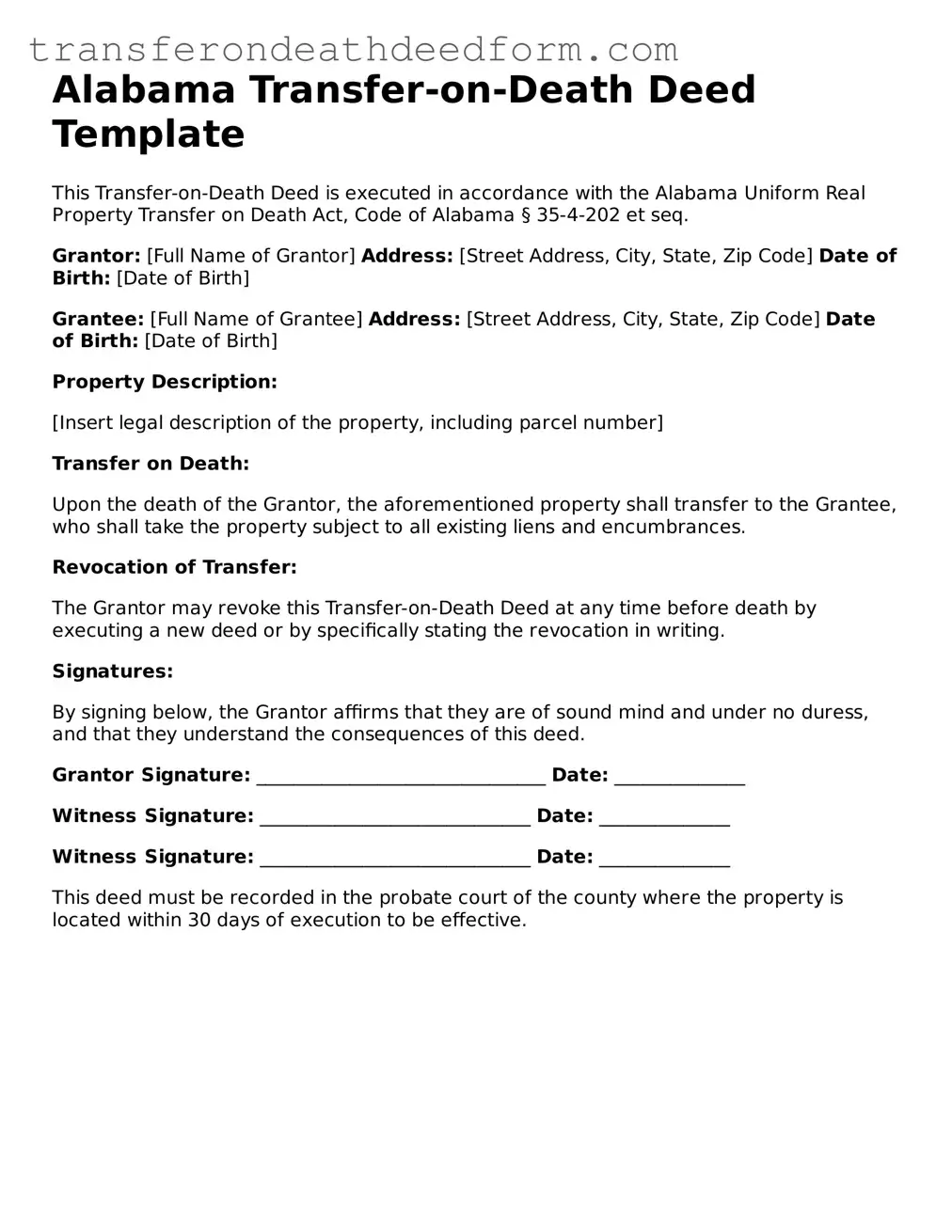Alabama Transfer-on-Death Deed Template
This Transfer-on-Death Deed is executed in accordance with the Alabama Uniform Real Property Transfer on Death Act, Code of Alabama § 35-4-202 et seq.
Grantor: [Full Name of Grantor]
Address: [Street Address, City, State, Zip Code]
Date of Birth: [Date of Birth]
Grantee: [Full Name of Grantee]
Address: [Street Address, City, State, Zip Code]
Date of Birth: [Date of Birth]
Property Description:
[Insert legal description of the property, including parcel number]
Transfer on Death:
Upon the death of the Grantor, the aforementioned property shall transfer to the Grantee, who shall take the property subject to all existing liens and encumbrances.
Revocation of Transfer:
The Grantor may revoke this Transfer-on-Death Deed at any time before death by executing a new deed or by specifically stating the revocation in writing.
Signatures:
By signing below, the Grantor affirms that they are of sound mind and under no duress, and that they understand the consequences of this deed.
Grantor Signature: _______________________________
Date: ______________
Witness Signature: _____________________________
Date: ______________
Witness Signature: _____________________________
Date: ______________
This deed must be recorded in the probate court of the county where the property is located within 30 days of execution to be effective.
